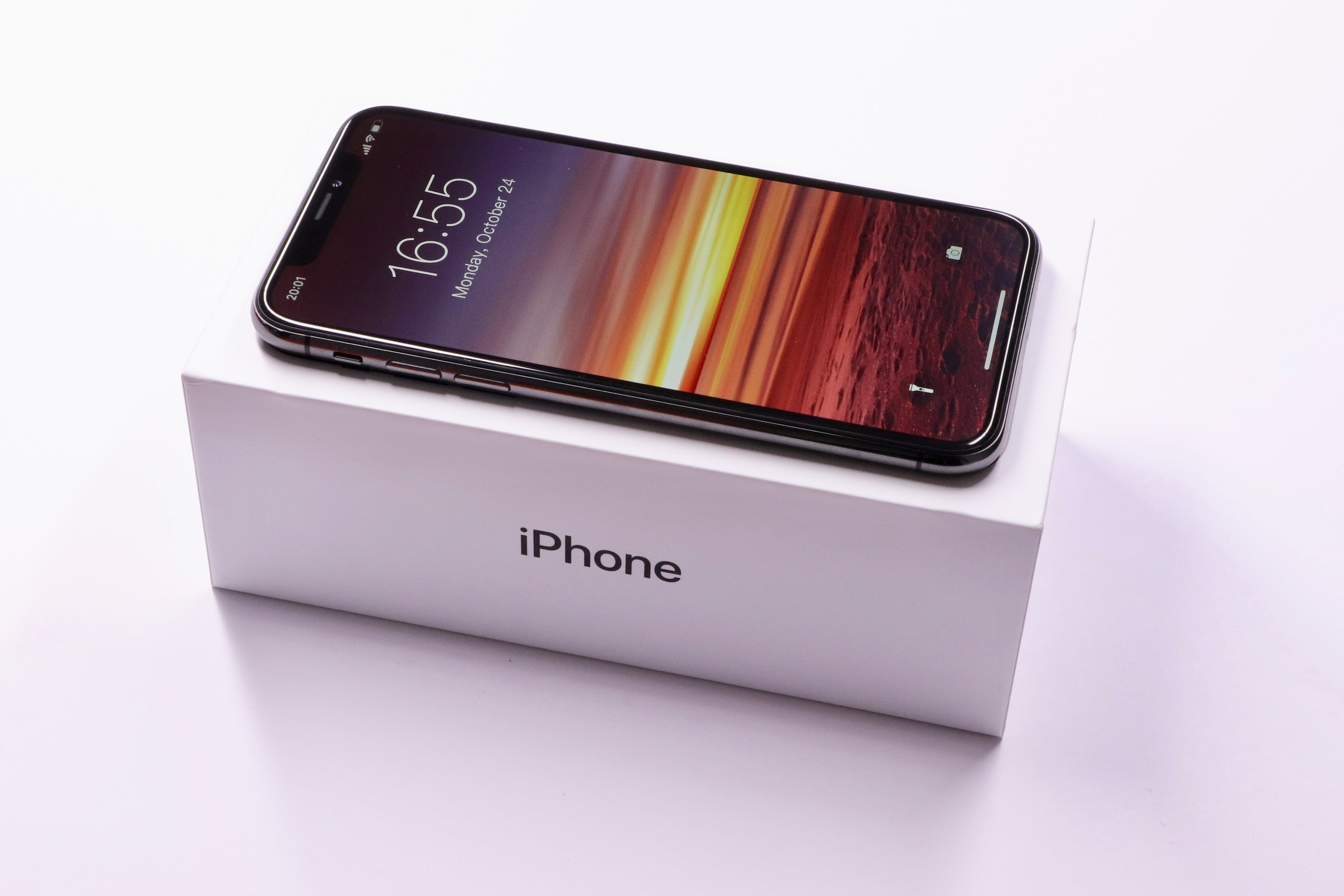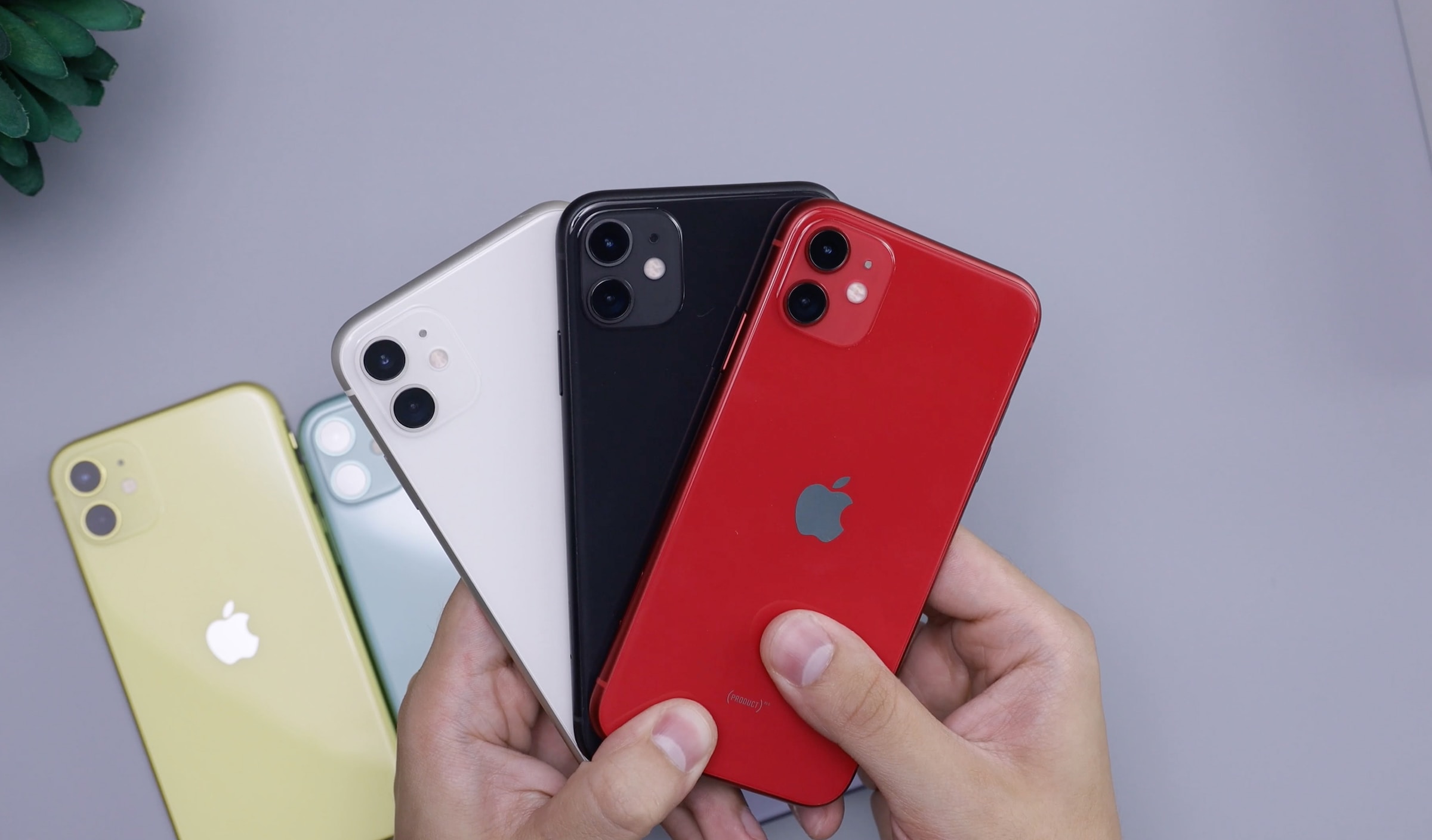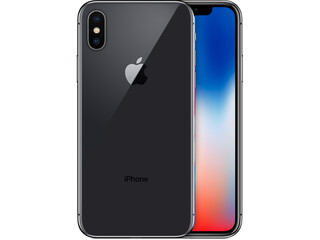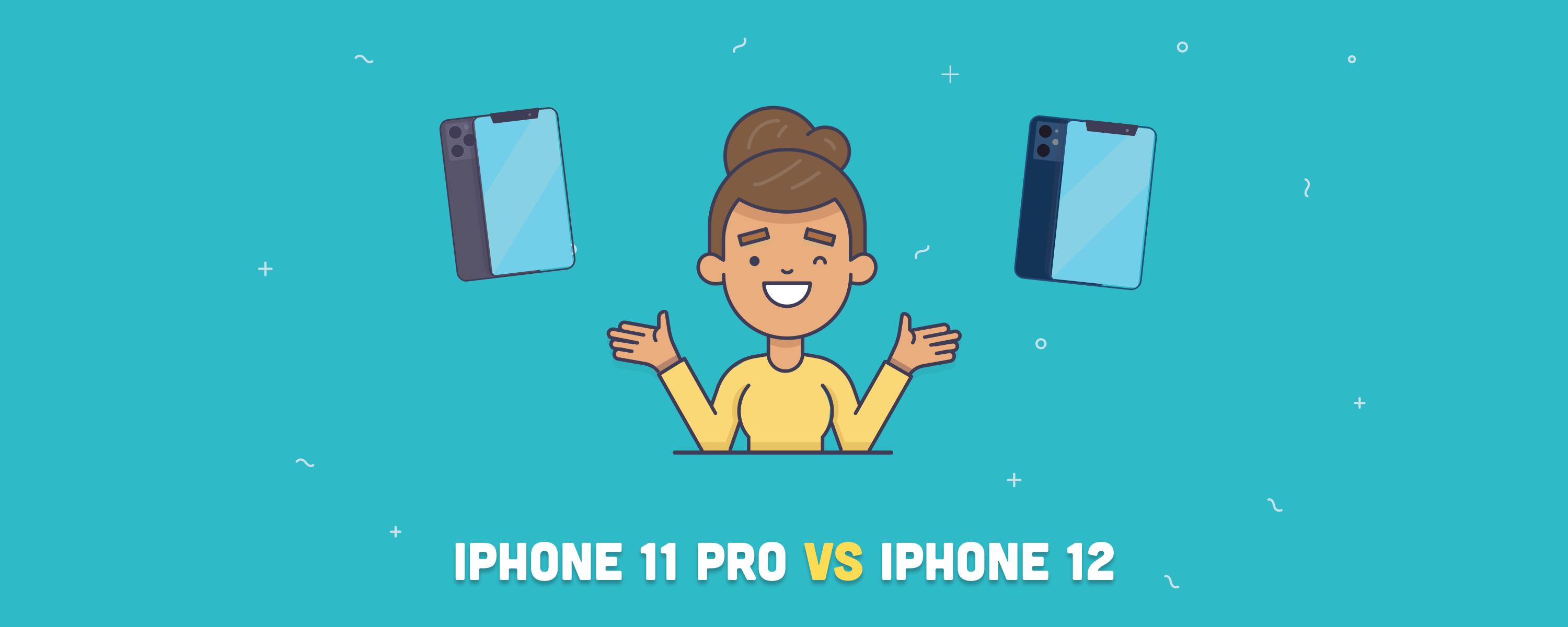The iPhone X was a pretty big deal when it came out in 2017. It represented a radical design change for Apple, ditching the home button and bezels in favor of an all-screen front. Face ID replaced Touch ID as the primary way to unlock your phone, and a new OLED display made everything look gorgeous. Now that the iPhone 11 is cheaper than ever, is it still worth opting for the older model? Let’s take a look at some of the key differences between the iPhone X vs. the iPhone 11 in this article.
Table of contents
iPhone X vs. iPhone 11: Specs comparison table
The following comparison table highlights the key specifications of the iPhone X and the iPhone 11. It aims to provide you with a clear understanding of the differences between these two iPhone models.
| Feature | iPhone X | iPhone 11 |
|---|---|---|
| Release year | 2017 | 2019 |
| Size | 5.65 x 2.79 x 0.30 in 143.6 x 70.9 x 7.7 mm | 5.94 x 2.98 x 0.33 in 150.9 x 75.7 x 8.3 mm |
| Weight | 6.14 oz 174 g | 6.84 oz 194 g |
| Display | 5.8″ OLED | 6.1″ LCD Liquid Retina |
| Resolution | 2436 x 1125 | 1792 x 828 |
| PPI | 458 | 326 |
| Chipset | A11 Bionic | A13 Bionic |
| RAM | 3GB | 4GB |
| Storage options | 64GB 256GB | 64GB 128GB 256GB |
| Rear cameras | Dual 12MP (Wide and Telephoto) | Dual 12MP (Wide and Ultra Wide) |
| Front camera | 7MP TrueDepth | 12MP TrueDepth |
| Battery capacity | 2716 mAh | 3110 mAh |
| Wireless charging | Yes, Qi | Yes, Qi |
| Water resistance | IP67 | IP68 |
| SIM card | Nano-SIM eSIM | Nano-SIM eSIM |
| Original release price | $999 for 64GB $1,149 for 256GB | $699 for 64GB $749 for 128GB $849 for 256GB |
| Price (refurbished) | Starting at | Starting at |
iPhone X vs. iPhone 11: What are the main differences?
The iPhone X has a sharper display with OLED technology
The main difference between the iPhone X and iPhone 11 in terms of display technology is that the iPhone X features a sharper display with OLED technology, while the iPhone 11 has a larger LCD display.
The iPhone X introduced OLED technology to iPhones. OLED displays offer better image quality with deeper blacks and brighter whites compared to LCD displays. This technology provides a more vibrant and immersive viewing experience. The older model has a higher resolution display compared to the iPhone 11. It features a 2,436×1,125-pixel resolution, while the iPhone 11 has a resolution of 1,792×828. The higher resolution of the iPhone X results in sharper and more detailed visuals.
In addition, The iPhone 11 has a larger 6.1-inch display, while the iPhone X has a 5.8-inch display. The larger display of the iPhone 11 provides a more spacious viewing area, which can enhance multimedia experiences such as watching videos or playing games. Both the iPhone X and iPhone 11 have common display features such as True Tone and wide color support, which adjusts the display’s color temperature based on ambient lighting conditions, providing a more natural and comfortable viewing experience. Wide color support allows for a wider range of colors to be displayed, resulting in more vivid and lifelike visuals.

The iPhone X is made from stainless steel, and the iPhone 11 uses an aluminum frame
The iPhone X and iPhone 11 differ in terms of their build materials and durability. The iPhone X features a sleek and nearly all-screen design, with a stainless steel frame and glass on the front and back. On the other hand, the iPhone 11 uses an aluminum frame with glass on the front and back. While both models have a premium look, the use of stainless steel in the iPhone X gives it a more luxurious and high-end feel.
In terms of durability, the iPhone X has an IP67 rating, which means it is fully dust protected and can withstand being submerged in 1 meter of water for up to 30 minutes. In comparison, the iPhone 11 has an IP68 rating, which offers better water resistance, allowing it to withstand being submerged in up to 4 meters of water for a similar duration. Additionally, the iPhone 11 performed well in drop tests, withstanding eight different drops on hard concrete, including a drop from 11 feet high.
The difference in durability between the iPhone X and iPhone 11 can be attributed to the use of improved glass technology in the latter.
The iPhone 11 has better cameras but lacks a telephoto lens
The camera features of the iPhone X and iPhone 11 have distinct differences, with the iPhone 11 offering superior camera capabilities compared to the iPhone X, despite lacking a telephoto lens. Here is a detailed comparison of the camera features of both models:
Lens configuration
- iPhone X: The iPhone X has a standard lens and a telephoto shooter. The telephoto lens allows for zooming into a photo without losing quality, providing an advantage for capturing distant subjects.
- iPhone 11: The iPhone 11 features a wide and ultrawide camera lens configuration. The ultrawide lens captures a 120-degree field of view, allowing you to capture sweeping landscapes and fit more into your photos.
Zooming capabilities
- iPhone X: With its telephoto lens, the iPhone X provides optical zoom capabilities, allowing you to zoom in on subjects without a loss of quality.
- iPhone 11: While the iPhone 11 lacks a telephoto lens, it can still achieve 2x digital zoom without any obvious loss of detail. However, it does not have optical zoom capabilities.
Image processing technology
- iPhone X: The iPhone X does not have the advanced image processing technology found in the iPhone 11.
- iPhone 11: The iPhone 11 features the more powerful A13 chipset and new image processing tech like Deep Fusion. These advancements contribute to better indoor shots, sharper images, and more accurate colors. Deep Fusion allows for faster autofocus and enhances the overall quality of photos taken with the iPhone 11.
Photography features
- iPhone X: The iPhone X has a 7-megapixel front camera that can capture photos at a 1080p resolution. It lacks certain features like Night mode and Slofies (slow-motion selfies).
- iPhone 11: The iPhone 11 has a 12-megapixel front camera that captures photos at a higher resolution and can record video at 4K. It introduces new photography features like Night mode, which captures impressive photos in low-light conditions, and Slofies for creative slow-motion selfies.
Low-light photography
- iPhone X: The iPhone X does not have an automatic Night Mode feature, resulting in grainier low-light photos compared to the iPhone 11.
- iPhone 11: The iPhone 11’s automatic Night Mode feature captures impressive photos in near-dark conditions, significantly improving low-light photography. The iPhone 11 also offers great overall image stabilization, providing a smooth video shooting experience.
Additional camera tools and features
- iPhone X: The iPhone X has a brighter true-tone flash and a higher contrast ratio HDR. It also has portrait mode, but it cannot detect pet faces.
- iPhone 11: The iPhone 11 introduces additional camera tools such as a brighter true-tone flash, a higher contrast ratio HDR, and an improved portrait mode that can detect pet faces.
In summary, while the iPhone X has the advantage of a telephoto lens for zooming capabilities, the iPhone 11 offers superior camera capabilities overall. The iPhone 11’s wide and ultrawide lens configuration allows for capturing a wider image without the need to physically move back.
Additionally, the iPhone 11 incorporates advanced image processing technology like Deep Fusion, enhancing photo quality and providing faster autofocus. The iPhone 11 also introduces new features like Night mode and Slofies, improving low-light photography and adding creative options for selfies.
Check this iPhone 11 vs. iPhone X camera test to know more:
The iPhone 11 has a superior battery life
Battery life is a crucial factor to consider when purchasing a smartphone, as it directly impacts the user experience and convenience of the device. In this regard, the iPhone 11 surpasses its predecessor, the iPhone X, with its superior battery performance.
The iPhone 11 is equipped with the A13 Bionic chip, which not only offers enhanced power and speed but also boasts improved power efficiency. This power efficiency plays a significant role in extending the battery life of the iPhone 11, allowing users to enjoy their devices for longer periods without the need for frequent charging.
According to Apple’s internal testing, the iPhone 11 provides up to one hour longer battery life than the iPhone XR overall. The iPhone 11 impressively lasts for up to 17 hours of offline video playback, up to 10 hours of streaming video over Wi-Fi, and up to 65 hours of audio playback per charge.
In comparison, the iPhone X was touted to last for up to 13 hours of video playback. This significant boost in battery life showcases the advancements made in the iPhone 11, ensuring that users can enjoy their favorite videos, movies, and music for extended periods without interruption.

The iPhone 11 supports Qi-based wireless charging, like the older model, allowing for convenient and hassle-free charging. Additionally, the iPhone 11 also supports fast charging, which enables users to charge their device up to 50% in just 30 minutes when using an 18W or higher USB-C charger.
In terms of battery capacity, the iPhone X is equipped with a 2,716 mAh battery, while the iPhone 11 boasts a larger 3,110 mAh battery. These figures demonstrate a noticeable difference in battery performance between the two devices, with the iPhone 11 offering a significant advantage in terms of longevity.
The iPhone 11 has a 128GB storage option
The iPhone 11 offers a new storage option of 128GB, which is not available on the iPhone X. This new storage capacity provides users with more flexibility and space to store their apps, photos, videos, and other files. It strikes a balance between the lower storage option of 64GB and the higher option of 256GB and offers a middle-ground choice that can accommodate their storage needs without paying for excess storage they may not require.
For the average user who uses their iPhone for everyday tasks, such as browsing the internet, social media, and taking photos, the 128GB storage option on the iPhone 11 is likely to be sufficient. It provides ample space for storing a large number of apps, photos, and videos, as well as other files. Users who don’t require as much storage may find it more cost-effective to opt for the 64GB option instead.
Considering the significance of storage capacity for users and the benefits of the 128GB option, it is recommended that users who require more storage space consider upgrading to the iPhone 11 with the 128GB storage option. This will provide them with ample space to store their files.
iPhone X vs. iPhone 11: Which one should you get?
The iPhone X and iPhone 11 are both popular, robust, and currently cheap models. Here are the key points to decide which one you should buy:
Reasons to buy the iPhone X
- The smaller size of the iPhone X makes it sleeker and more portable, which may be preferable for those who live an on-the-go lifestyle.
- The iPhone X is available in space gray or silver, offering a more classic and modern look.
- The iPhone X features a 5.8-inch OLED display, which technically has a higher resolution and dynamic range compared to the iPhone 11’s 6.1-inch LCD display.
- The OLED display on the iPhone X provides deeper, more vibrant colors, while the LCD display on the iPhone 11 offers more subtle colors.
Reasons to buy the iPhone 11
- The iPhone 11 is slightly larger than the iPhone X, with a few millimeters added to its height, width, and thickness. It is also a few grams heavier.
- The larger size of the iPhone 11 makes it better for tasks like watching videos and gaming, as it offers a bigger screen.
- The iPhone 11 offers a wider range of color options, including purple, yellow, green, red, black, and white.
- The dual-camera system (a 12-megapixel wide lens and a 12-megapixel ultra-wide lens) on the iPhone 11 allows for enhanced photography capabilities, including a wider field of view and the ability to capture more detail in photos.
- The iPhone 11’s camera system provides more versatility and options for creative photography.
- The A13 Bionic chip in the iPhone 11 offers improved performance, faster processing speeds, and better energy efficiency compared to the A11 Bionic chip in the iPhone X.
- The iPhone 11 generally offers better battery life compared to the iPhone X.
If you are thinking of buying an iPhone X or iPhone 11, we strongly recommend you to check out RefurbMe to buy it, as it is discontinued. We are a platform that allows you to compare prices and availability of refurbished iPhones and other Apple devices from reputable sellers, such as the Apple Store and Back Market. By buying refurbished, you can save a significant amount of money compared to buying a brand-new phone.
Refurbished iPhones are thoroughly tested, repaired, and restored to a like-new condition, ensuring that you receive a high-quality device. With RefurbMe, you can take advantage of the discounts offered by these trusted sellers and make an informed decision on whether the iPhone X or iPhone 11 is the right choice for you. So, head over to RefurbMe now and find the perfect refurbished iPhone that suits your needs and budget.
👉 Related posts:
- Is the iPhone X worth buying in 2024?
- iPhone X vs. iPhone 12
- iPhone X vs. iPhone 13
- iPhone X vs. iPhone XR
- iPhone XR vs. iPhone 11
- iPhone 11 vs. iPhone 13
- Why Is There No iPhone 9 and iPhone 10?
FAQ
When comparing the iPhone X and iPhone 11, the latter emerges as the better choice in terms of performance, camera quality, durability, and battery life. However, personal preferences regarding design, color options, and display size may influence the decision-making process. The iPhone X also has an OLED screen that may be a priority for some.
Whether it is worth upgrading from the iPhone X to the iPhone 11 depends on your specific needs and preferences. If you are content with the design and performance of your iPhone X and do not find the new features and improvements offered by the iPhone 11 to be essential, it may be wise to wait for future iPhone upgrades that could offer more significant advancements.
However, if you are looking for better camera capabilities, improved performance, extended battery life, and a more affordable option, then upgrading to the iPhone 11 would be a worthwhile choice. Ultimately, it is important to consider your personal priorities and budget when making the decision to upgrade.
The iPhone X features a 5.8-inch OLED display with a resolution of 2436×1125 pixels and a pixel density of 458 pixels per inch. On the other hand, the iPhone 11 comes with a larger 6.1-inch LCD display with a resolution of 1792×828 pixels and a pixel density of 326 pixels per inch.
The camera setups of the iPhone X and the iPhone 11 have some significant differences. The iPhone X has a wide and telephoto lens, making it better for zooming in on subjects. On the other hand, the iPhone 11 has a wide and ultra-wide lens, allowing for a wider image without having to move back. The iPhone 11 also offers additional camera features, such as Night Mode and Deep Fusion, which enhance the photography experience.
The iPhone X is equipped with a 2,716 mAh battery, while the iPhone 11 features a larger 3,110 mAh battery. This increase in battery capacity in the iPhone 11 translates to potential improvements in battery performance. While the iPhone X can provide up to 13 hours of video playback time on a single charge, the iPhone 11 offers up to 17 hours, making it one of the most important aspects to consider for a purchase.










